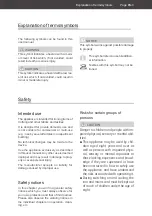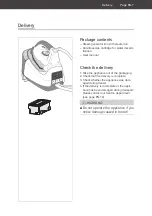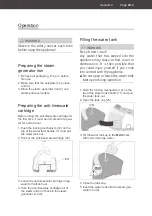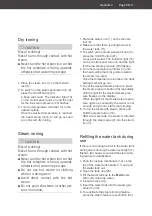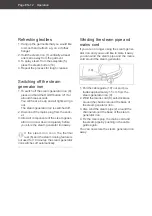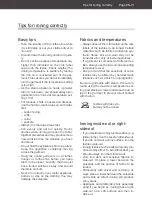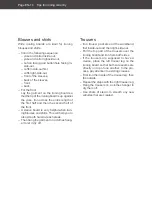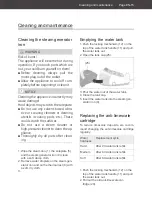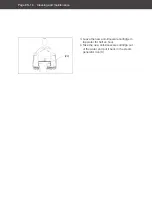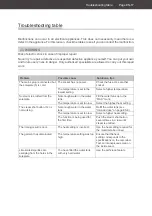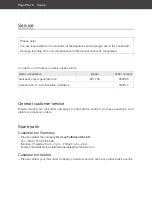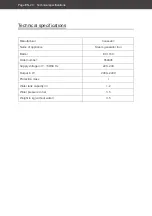
Page EN-13
Tips for ironing correctly
Tips for ironing correctly
Basic tips
– Take the laundry off the clothes line while
it is still damp or set your clothes dryer to
“iron dry”.
– Smooth down the laundry and iron it quick-
ly.
– Do not set the appliance temperature any
higher than indicated on the care label
sewn onto the textile. Check whether the
ironing temperature is suitable by testing
the iron on a concealed part of the gar-
ment. This ensures you do not immediately
ruin the garment if the temperature setting
is too high.
– As the steam appliance heats up faster
than it cools down, you should always iron
garments to be ironed at temperature set-
ting 1 first.
– For blouses, shirts, trousers and dresses,
iron the hard-to-reach areas on both sides
first:
– button facing,
– cuffs,
– collar,
– pockets.
– Always iron the large areas last.
– Iron evenly and not too quickly. Hectic
strokes when ironing will push the fabric
together somewhat and may produce more
new wrinkles than the wrinkles you have
ironed out.
– Do not hold the appliance still in one place.
Keep the appliance constantly moving
across the garment.
– Hang the ironed garments on a clothes
hanger or clothes line before you hang
them in the closet. Laundry that has just
been ironed wrinkles easily and should
therefore cool off.
– Never iron directly over metal appliqués,
buttons or zips on the clothing. You may
damage the soleplate.
Fabrics and temperatures
– Always observe the information on the care
labels of the textiles to be ironed. Certain
materials such as fabrics containing syn-
thetic fibres, silk and wool may not be
ironed at all or only at low temperatures.
– If a garment is composed of different tex-
tiles, always use the lowest corresponding
temperature level.
– Keep in mind that the sensitivity of some
textiles may be altered by chemical modi-
fications such as a finish or impregnation.
Iron wool garments with steam. We recom-
mend using the maximum temperature set-
ting and placing a towel underneath and on
top of the garment to prevent direct contact
with the iron.
Textiles with this sym-
bol may not be ironed.
Ironing inside-out or right-
side-out
– If you would like a shiny textile surface (e.g.
table cloths), iron the textile right-side-out.
If you do not want a shiny surface, iron the
textile inside-out.
– Ironing textiles such as silk will quickly pro-
duce a shiny effect. To avoid this effect, you
should always iron them inside-out.
– Only iron dark and sensitive fabrics in-
side-out. Or place a towel between the
soleplate and the section of fabric to be
ironed.
– Particularly with velvet and corduroy, al-
ways place a towel between the soleplate
and textile as direct ironing will produce
shiny areas.
– Appliqués and embroidery look especially
good if you begin by ironing these right-
side-out on a soft surface and then in-
side-out.
Содержание EC1749
Страница 22: ...Technische Daten Seite DE 22...





